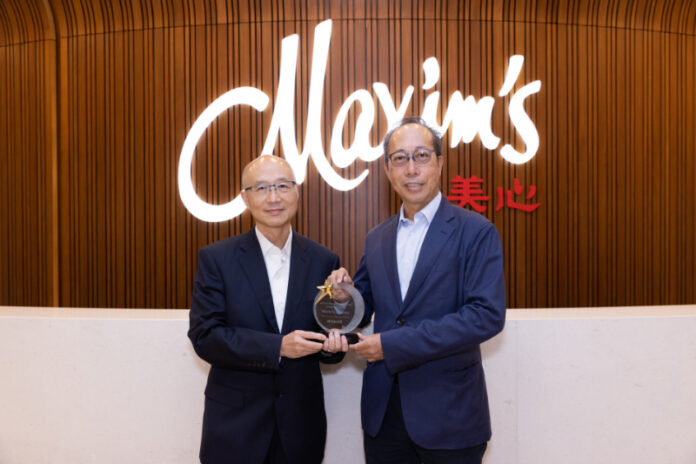
For a household name in the F&B industry like Maxim’s, disruptions are part of the business, and can be rightfully solved with enough foresight and preparation.
Having been in operation since 1956, Maxim’s Group currently runs more than 1,800 Chinese, Western, Japanese, and Southeast Asian restaurants across Asia. With decades of experience in the business, the company has weathered its share of challenges — from supply chain issues, to recession periods.
Therefore, when the COVID-19 pandemic came, Maxim’s had an idea what changes it needed to carry out in order to survive. However, it still needed a technology partner that could implement its vision for digital transformation.
Changing customer demand
The F&B sector has been one of the hardest hit during the pandemic. As many establishments either downsized or completely shuttered operations due to COVID-19 restrictions, it was clear that adjustments had to be made.
During the early part of 2020, dine-in was strictly prohibited in many parts of Asia, which meant that restaurants’ chances of survival rested solely on takeaway and delivery.
Even more challenging was the staff shortage felt across the entire enterprise landscape. For an F&B business like Maxim’s, people cannot just go full 100% remote work.
This is where a disaster recovery (DR) setup came in handy, noted Louis Mah, Hong Kong Maxim’s Group’s CIO.
“Disaster recovery setup is critical to our business continuity, especially with COVID-19, when the government’s quarantine requests and constraints can be announced at any time, and be applicable anywhere. This could make it challenging for F&B businesses, like Maxim’s, to maintain our various business operations, such as real-time, online, and offline models,” he said.
Fortunately for Maxim’s, it had already been working with a technology partner for over a decade.
As software giant Oracle is already familiar with the F&B chain’s systems environment, the planning and execution of the latter’s digital transformation was easier than expected. However, the undertaking was not without roadblocks.
“The most significant challenge was to design and implement an IT solution that could accommodate Maxim’s Group’s needs to meet their own customer demands in a short amount of time and in a cost-effective manner,” said Patrick Lo, Vice President and Geography Managing Director, Oracle Hong Kong and Taiwan.
He added that with the entire process conducted during the pandemic, the IT teams of both organisations worked remotely most of the time. Since the project was extensive and complex, the amount of collaboration and dedication it required was “unprecedented” as well, said Lo.
Recipe for success
Following consultations with Oracle, Maxim’s decided to implement a tight integration of public cloud, private cloud, multi-cloud, and on-premises applications. While seemingly tricky to pull off, both parties agreed it was crucial to support Maxim’s agility, while still minimising costs.
Through the Oracle Cloud Infrastructure, DR backup for mission critical applications — such as ERP, HRMS, and the VMware server farm — can be set up under normal circumstances with minimum capacity. As soon as the DR is activated, capacity can be expanded immediately to accommodate the production in need.
“By modernising and moving the mission-critical business applications and process workflows to mobile applications, our team can work remotely without the need to be physically in the office. We are now able to approve invoices and expense reports to the capital investment workflow anywhere and at any time,” said Louis Mah of Maxim’s.
Presently, a lot of office applications at Maxim’s still reside on Intel servers with VMware virtualisation. Other than the on-premises setup, Maxim’s has adopted the Oracle Cloud VMware Service, which is said to provide an identical VMware experience on the Oracle Cloud.
On top of these, Maxim’s has also leveraged Oracle’s Autonomous Data Warehouse (ADW). Some of the capabilities it has delivered for the F&B group included were:
- Self-tuning, which allows ad-hoc queries to be addressed without an elaborate data model;
- Self-repairing, patching, and automatic backup saving the IT administration and management work; and
- Self-scaling up and down on demand, assuring sufficient computing capacity at peak hours, while preserving cost during idle times.
According to Maxim’s COO Keith Siu, ADW allows the restaurant chain to scale up and down feasibly and automatically. “Our IT functional team can focus on monitoring the implementation of the system without the need of in-depth technical and skills experience, allowing them to focus on tasks that drive advanced technology value to Maxim’s’ businesses and operations.”
Moreover, automation protects the company’s database on a regular basis, without the need for manual upgrades, he added.
The ADW also supports different analytics on the front end, such as Oracle Analytics Cloud, IBM Cognos, Power BI, Tableau, and Excel spreadsheets, noted Oracle’s Patrick Lo.
“The autonomous features of ADW frees up the Maxim’s IT team’s time on database administration and management to focus on value-added tasks. Most importantly, different applications can work seamlessly among each other via the Oracle Integration Cloud, helping Maxim’s Group streamline the business process and minimise investment needed in workforce upskilling,” Lo said.
Golden opportunities
Having implemented a cloud-first strategy throughout its business, Maxim’s has set its sights on new and emerging technology to complement its digital transformation so far.
“Data-driven decision-making is the trend. Leveraging AI and ML to uncover insights from the sea of data is in the experimental stage. The complexity of business models to support our expansion strategy is crucial for Maxim’s future — it is to have all applications on cloud with integration, including HR and CRM data,” Keith Siu of Maxim’s said.
This strategy, according to the COO, will power their qualitative data collection, to further train their AI and ML systems. The data will then provide them with better insights on supply chain forecasting, sales forecasting, target marketing and manufacturing automation.















